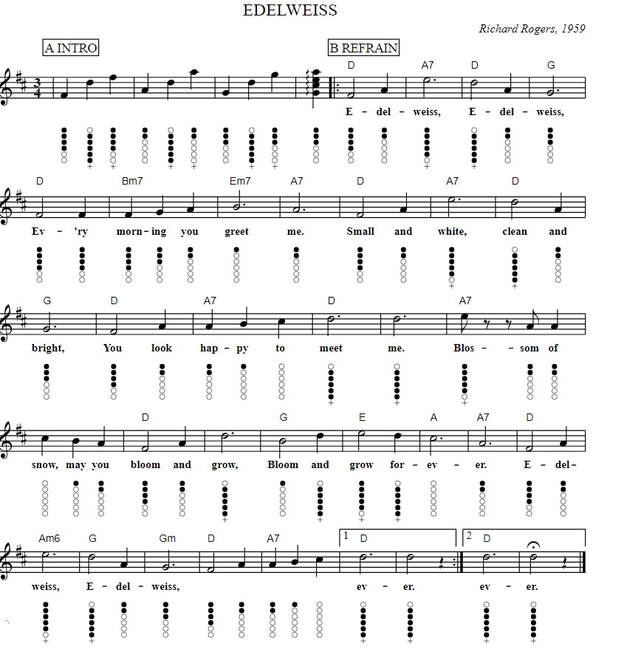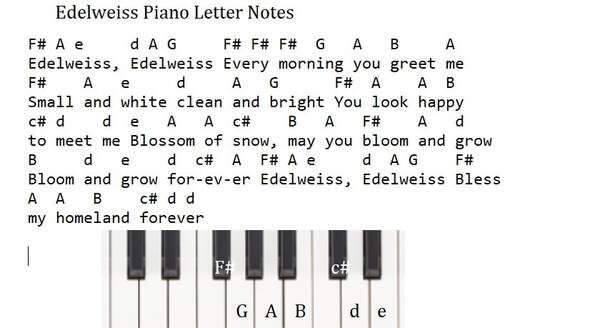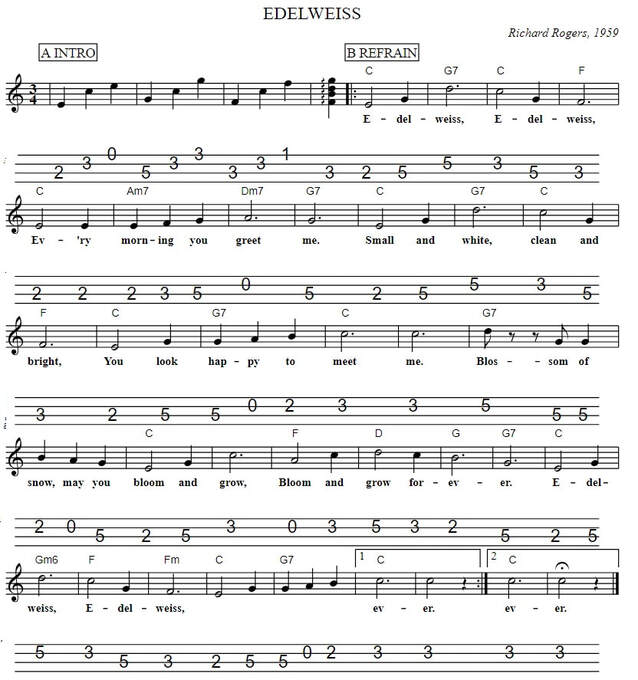Edelweiss Tin Whistle And Mandolin Sheet Music Notes
This version is in the easy to play Key of D Major. This one is one of the best known folk songs outside of Ireland. It was written especially for the film The Sound Of Music in 1959 by Richard Rodgers and Oscar Hammerstein. The last version includes the piano letter notes for learners / beginners. The mandolin sheet music tab is in the key of D and a version is also in C Major.
Below is the list of sheet music and tin whistle songs that are in my ebooks. This is the largest collection of tin whistle songs ever put together.[over 800 songs ] Including folk, pop and trad tunes plus German And French songs along with Christmas Carols.
All of the sheet music tabs have been made as easy to play as was possible.
The price of the ebooks is €7.50
All of the sheet music tabs have been made as easy to play as was possible.
The price of the ebooks is €7.50
Edelweiss mandolin sheet music tab in the key of D Major
Edelweiss piano letter notes which match the above piece of mandolin sheet music.
And below is the tab in C Major







